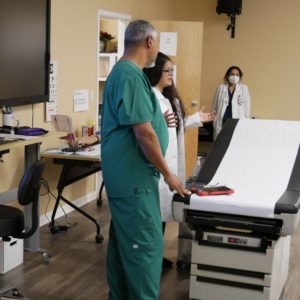Technology has exploded and provided us access to more information than ever before, requiring us to scrutinize the information that we find and assess whether or not our sources have provided us with good versus poor quality information. The clinical questions need to be directly relevant to the patient’s problem and phrased in specific way to facilitate the search process. The PICO format of questions (where P stands for Population, I-Intervention, C-Comparison and O-Outcome) makes this process easier.
PICO – is a mnemonic for the important parts of well-build clinical question. Formulating a question in this manner not only allows you and your patient to specify upfront what is important but also helps formulate the search strategy by identifying most important or core concepts that need to be in article.
P – Patient or Problem vs Population
This part should answer the question: “How would you describe a group of patients, similar to yours?”, or “What are the most important characteristics of the patient?”. In other way, during your search ask yourself: “Am I interested in specific age cohort (eg. age margin, children, adults etc.) or health cohort (eg. healthy, diabetic, with myocardial infarction etc.)?” Specify or address your question to the specific problem or specific condition or set of circumstances!
I – Intervention, Exposure, Prognostic Factor
What main intervention are you considering? What do you want to do with this patient? During search process, you can ask about exposure to certain conditions or risk behavior, specific diagnostic tool or procedure, specific drug or procedural intervention.
C – Comparison
We should compare our results with others and for medical search we ca try to ask the questions about the main alternative for treatment or procedural intervention, alternative diagnostic tool or alternative treatment (drug).
O – Outcome
What are you trying to accomplish, measure, improve or affect? In this section during search we should ask about future management or/and development of the disease, effective diagnosis of condition or about prevention of the disease. Please note, we should clarify what we want to know, and then it will be much easier to find an answer!



